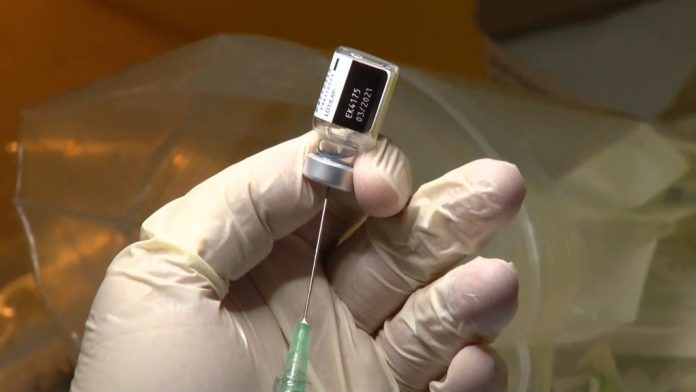As Canadians wait for their turn at the COVID-19 vaccine, individual provinces are developing their own priority lists for the precious few doses that are being distributed.
Here in New Brunswick, residents of long-term care facilities over the age of 85 are the top priority for the latest batch of 2,400 doses.
Department of Health spokesperson Bruce Macfarlane said the province’s goal is to vaccinate all long-term care residents and staff before the end of March.
After that, the vaccine rollout picture becomes a bit murky, with questions remaining about vulnerable groups, like older people and those with underlying health conditions, such as lung disease, diabetes and heart problems.
Phase 1: Now to March
New Brunswick’s first phase of vaccinations will last until March and target four groups — long-term care residents and staff; health-care workers with direct patient contact, all adults in First Nations communities, and older New Brunswickers.
But repeated requests to the province to define what “older” means have gone unanswered.
On Thursday by email, Macfarlane said, “Public Health is presently reviewing components of vaccination plan, including specific ages.”
The federal government’s National Advisory Committee on Immunization has advised provinces to start with those who are over 80 and then decrease by five-year increments — as supply becomes available — until everyone over 70 has been inoculated.
For now, the vaccines are being administered on a don’t-call-us-we’ll-call-you basis.
Department of Health spokesperson Shawn Berry said health officials are currently contacting facilities around the province to get the needles into the arms of the priority population.
Phase 2: Beginning in the spring
The priority list for this phase will include residents and staff of “communal settings,” which include homeless shelters and correctional centres, other health-care workers such as pharmacists, and first responders and critical infrastructure workers (power, water and sewer, for instance).
Phase 3: Likely mid-to-late summer
The Department of Health has offered few details about the third phase. On Wednesday, Berry said, “Availability of vaccine is expected to be limited until mid-to-late summer.
Once vaccine supply is continuous and in large enough quantities, the entire population will be offered the opportunity to be immunized.”
Underlying health conditions
It’s not clear when people with underlying health conditions will be vaccinated. From the beginning, health experts warned that people with certain health problems were more at risk of developing dangerous symptoms of COVID-19.
On Thursday, the province announced that a person in their 40s from Moncton died “as a result of underlying complications, including COVID-19.” It is the ninth death in the province attributed to COVID-19.
The Department of Health was asked on Thursday morning about when people with underlying health conditions could expect to be vaccinated, but no one answered the question by publication time.
British Columbia, for example, has put this group into the first phase of vaccinations. While priority will be given to residents and staff of long-term care homes and health-care workers, as more doses become available, the priority list will expand to those with underlying health conditions.
Shifting vaccine focus
Some researchers have suggested that by the second stage of inoculations — once more vaccine is available — the strategy should shift to preventing the spread of COVID-19. That means vaccinating those who are more likely to spread the disease
“Once … we’ve covered the vulnerable groups, they should seriously consider prioritizing according to contacts and vaccinating either demographic groups or even individuals who have more contacts,” said Chris Bauch, a University of Waterloo professor of applied math who helped develop a computer model to determine the best vaccine deployment.
Bauch said his research found that vaccinating individuals 60 years of age and older will prevent the most deaths, and he supports that approach in the first phase.
But to control the spread of the disease more effectively, he suggests vaccinating people who have many contacts in order to reduce the risk of them spreading the virus to others.
The idea is at odds with the recommendations put forward by the National Advisory Committee on Immunization. It says that after the first stage of the vaccine rollout, those who have risked their lives during the pandemic, such as essential workers and first responders, should be inoculated.
It’s also a hard sell, said infection control epidemiologist Colin Furness, since the choice boils down to reducing deaths or reducing spread.
So far, health officials have opted to reduce deaths by prioritizing vaccinations for those living in long-term care, where so many of the deaths have occurred.
To take any other approach, said Furness, would seem “insensitive” to those living in those homes.
































